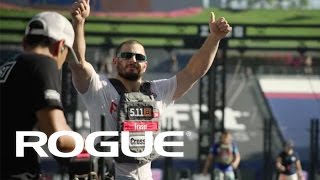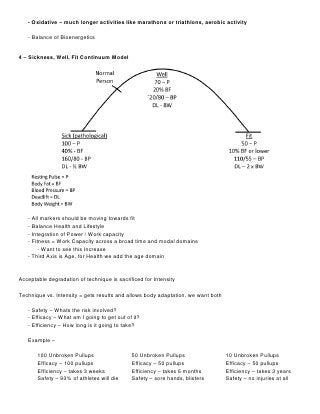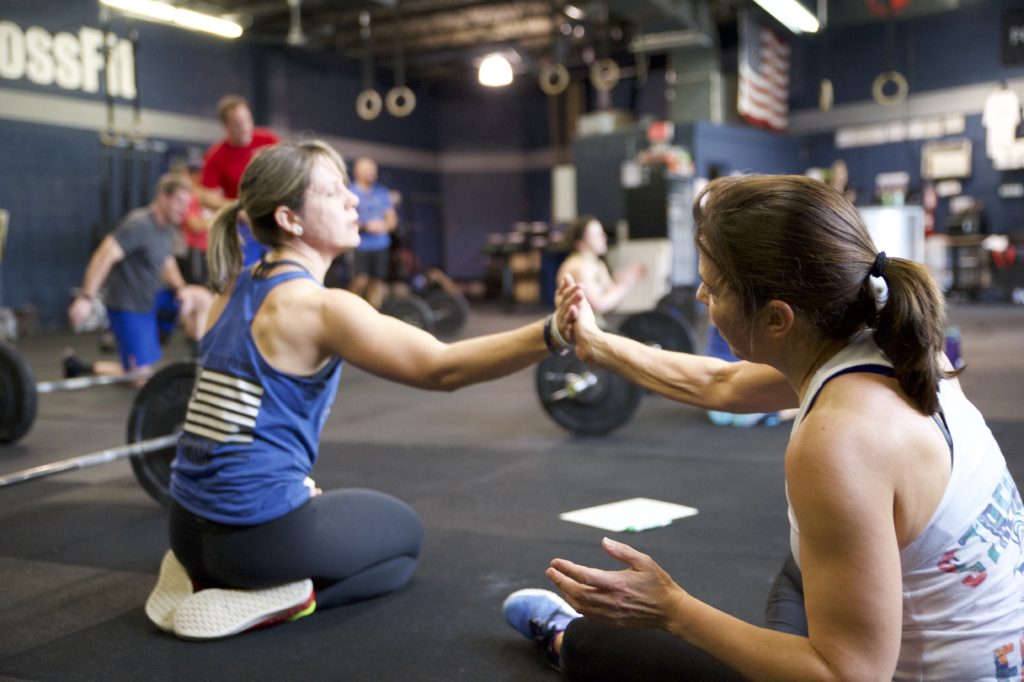
Read on if you are interested to compete in CrossFit Open. This article will provide information about Workout 22.2, Registration, Age groups, as well as the equipment needed. You will also find information on what to expect during competition. After reading this, you should be ready to compete. CrossFit Open also has information. Get started now! You'll be glad that it was!
Exercise 22.2
The Crossfit Open Workout 22.2 includes two workouts: one for athletes, and one for the whole body. The first, "Dual Deadlifts," has athletes complete one rep after another. This workout focuses on each exercise's strength and speed. This workout can be difficult for even the most experienced athletes. It is crucial to understand your body's limits. You can find videos of the two workouts on the Crossfit YouTube channel.
Register
You must register early if your goal is to compete in CrossFit Open. It's open to everyone, so make sure to register early in order to avoid missing out on the action. It's a fantastic opportunity to get in shape and compete in the CrossFit Games. More than 300,000. People competed last year. Register online now to get started

Age groups
It is a bit of a mystery what the Crossfit Games age groups are. While the individual division is the main focus, age groups are often the underrated competitors. While they might not be as exciting, age groups are worthy of more attention. Here are the facts. The age groups will start on August 4th this year. The Crossfit Games competition committee has established the rules for these age categories. They might be different than the individual division's date in certain cases.
Equipment is required
The best way to prepare for an Open CrossFit competition is by getting the right equipment. Typically, Open workouts are a couplet of easy-to-read movements, such as weighted step-ups and dumbbell snatches. This year's format is slightly different. CrossFit also released division-specific equipment lists in addition to its standard equipment.
Expectations
CrossFit beginners who have never participated in a CrossFit competition may feel intimidated. This is normal but you will find there are high expectations for the Open. CrossFit Open will provide an exciting opportunity for anyone looking to improve their fitness or just to show off their skills.

FAQ
Is Cardio Better Than Strength Training?
Both are equally effective. If you want to increase muscle mass faster, cardio is the better option.
Cardio burns more calories in a minute than strength training and more fat.
Although strength training can increase muscle mass, it is more difficult than cardio to do so.
Do weightlifting burn fat faster?
Although weight lifting can help you lose fat more quickly, it is best to combine it with cardio exercises.
For the best results of weightlifting, do it after cardio exercises.
If done correctly, weightlifting can increase your heart rate and oxygen intake which in turn helps you lose weight.
If you don't mix it with cardio, your body won't notice significant changes.
What is the best workout order?
It depends on what you are looking for. Start with heavy lifting if you're looking to build muscle mass. Then you can move to cardio. You can then go to strength training if your goal is to lose weight.
Start with cardio if you only want to lose fat. Next, add strength training.
If you are looking for muscle mass, cardio should be your last option. Cardio stimulates growth hormones and helps build muscle mass.
Also, eat before you workout. This will give your muscles more fuel, so they work harder. You will feel happier during your workout.
What if I exercise and drink alcohol?
Yes. Alcohol can increase energy expenditure, speed recovery time, and reduce soreness.
The insulin sensitivity of alcohol is also increased, which makes it easier for glucose to be absorbed.
However, alcohol can cause dehydration, which can slow down your metabolism. It can also decrease testosterone production, which can affect muscle-building ability.
It is important that women refrain from drinking alcohol before they exercise. Women who have consumed a lot of alcohol should wait at most 24 hours before working out.
Breastfeeding women should stay away from alcohol.
Men should only consume one drink per day.
How many calories should I eat daily?
This will vary from person-to-person. On average, 2000 to 2500 calories are consumed per day. The factors that determine how many calories are needed for you include your gender, age, height, activity level, lifestyle, and gender.
Statistics
- 10 pounds in a month is likely during a lean bulking phase, especially for beginners. (muscleandstrength.com)
- Candidates and applicants must pass all four tests at 70% (minimum level) to graduate from Basic Deputy U.S. Marshal (BDUSM) Training. (usmarshals.gov)
- The PRS enabled risk stratification for overall prostate cancer and lethal disease with a four-fold difference between men in the highest and lowest quartiles (HR, 4.32; 95% confidence interval [CI], 3.16-5.89). (pubmed.ncbi.nlm.nih.gov)
- Are You One of the 20% of Guys (mh.co.za)
- According to the American Academy of Dermatology (AAD), men over 50 are at a heightened risk of developing it. (healthline.com)
External Links
How To
How do I lose weight while working out?
Exercise can help you burn calories and increase your metabolism.
Exercise at a moderate intensity to safely lose weight.
These are the top tips for burning fat while you exercise.
-
Cardio exercises include walking, running, swimming, cycling, running and jogging.
-
Three times per week, exercise for 30 minutes.
-
You can lose weight by adding strength training to the routine.
-
Avoid intense training. It's possible to build muscle, but not lose it.
-
Hydrate well during exercise. Water helps flush out toxins and keep your body properly hydrated.
-
After working out, drink low-fat protein shakes. Protein shakes repair muscles and increase energy.
-
Smaller meals are better for you.
-
Don't skip breakfast! You can feel tired and slow if you skip breakfast.
-
Mental health is important. Stressful situations can affect your metabolism.
-
Keep a positive attitude. Studies show that overweight people are more likely to be obese than those who perceive themselves as attractive.
-
Sleep enough. A lack of sleep makes it difficult to lose fat.
-
Active living is key. Make sure you get up and move every hour.
-
Maintain a healthy diet. Eating right keeps you feeling full and satisfied longer.
-
Find ways to relax. Your body won't release stress hormones that cause muscle tissue destruction if you have a tense mind.
A balanced diet includes all essential nutrients needed for growth and development.
Consider eating six small meals daily instead of three big ones. This gives your body more time to digest the food you eat.
For strong bones to be maintained, you need approximately 500mg of calcium per day. Calcium is available in dairy products like milk, yogurt, fortified soy beverages, orange juice, cereal, bread, and cereals.
Calcium is found in green leafy vegetables, beans, tofu, seeds, nuts, and cheese.
Your body needs vitamin D to absorb calcium. Vitamin D is found in certain fortified foods, such as egg yolk and fatty fish.
Vitamin E is vital for your skin's health. Vitamin E can be found in vegetable oils as well as wheat germ oil, peanuts and almonds.
Zinc is essential for healthy immunity and wound healing. Zinc is found in oysters, legumes, meats, whole grains, and seafood.
Zinc deficiency can cause fatigue and loss of appetite. It can also lead to depression and impaired immunity.
Sugar intake can lead to insulin resistance which causes blood glucose levels to rise. Insulin resistance leads directly to weight gain.
Insulin resistance occurs when the bloodstream is full of free radicals. Free radicals are molecules that have unpaired electrons, which can cause damage to cell membranes or other parts of your body.
The most common sources of free radicals include food additives.
Free radical damage can lead to cancer, heart disease, diabetes, arthritis, asthma, and aging.
Antioxidants are essential for preventing free radical damage. Antioxidants protect against oxidative damage.
Antioxidant vitamins include Vitamin C (found in citrus fruits), beta carotene (found in carrots, sweet potatoes, spinach, broccoli, cantaloupe, apricots, squash, mangoes, peaches, peppers, tomatoes, cabbage, cauliflower, kale, Brussels sprouts, collard greens, watermelon, and strawberries), and Vitamin E (found in nuts, olive oil, avocados, and eggs).
Other antioxidant nutrients include selenium, copper, manganese, and zinc.
Selenium protects cells against oxidative damage from free radicals. Selenium is found in Brazil nuts, tuna, liver, kidney, shrimp, cod, turkey, beef, lamb, pork, and chicken.
Copper protects eyes, brain, lungs and red cells. Copper can be found in shellfish and poultry as well as meat and organ meats.
Manganese, an essential component of bone strength, is crucial. Manganese is found as a component of bone structure in brown rice (spinach, bananas), prunes, raisins and oatmeal.
Zinc is important for healthy growth, reproduction, and wound-healing. Zn can be found in lean cuts, white fish, poultry, eggs, and other foods.